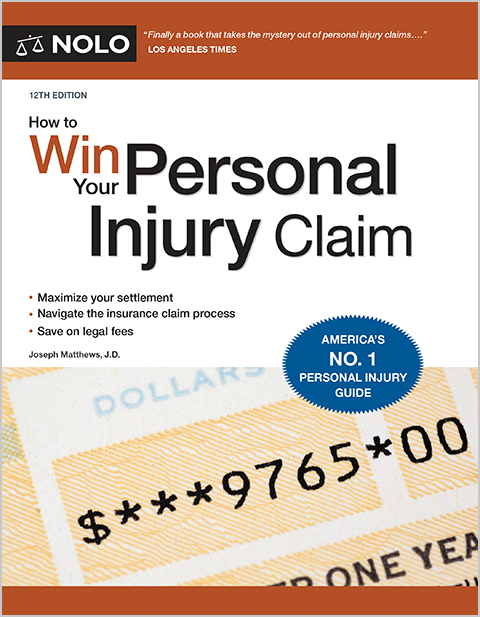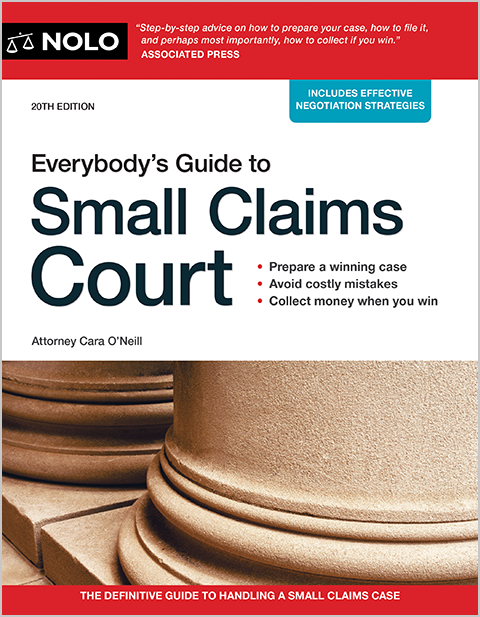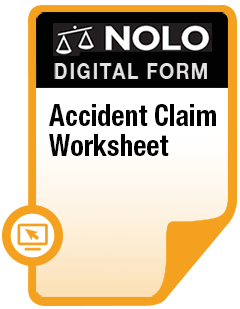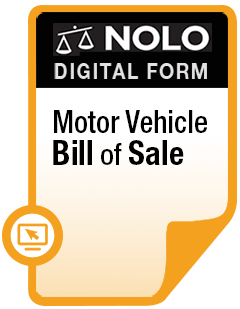Time limits for filing a Connecticut car accident lawsuit, the state's "comparative negligence" rule when an injured person is partly at fault for the crash, and more.
After any kind of traffic accident in Connecticut, it's important to understand the state laws that could have a big impact on any claim you end up making, including:
- the two-year deadline for the filing of most car accident lawsuits in Connecticut's civil court system, and
- Connecticut's "modified comparative fault" rule, which usually lets you get compensation for your car accident injuries and other losses even if you're partly to blame for the crash.
What Is Connecticut's Car Accident Statute of Limitations?
A "statute of limitations" is a state law that puts a strictly-enforced time limit on the right to bring a lawsuit. These deadlines vary based on the kind of harm you suffered and/or the kind of case you want to file.
(Note: the statute of limitations doesn't apply to a car insurance claim. Any insurance company, whether your own or the other driver's, is going to require you to make a claim—or at least give the insurer notice of an incident that could trigger a claim—"promptly" or "within a reasonable time" after the accident. That usually means a matter of days, or a few weeks at most.)
In Connecticut, as in most states, the statute of limitations that applies to most car accident lawsuits is the same as the larger one that applies to almost all personal injury cases where one person's negligence is said to have caused harm to another.
Specifically, Connecticut General Statutes section 52-584 says: "No action to recover damages for injury to the person, or to real or personal property, caused by negligence, or by reckless or wanton misconduct . . . shall be brought but within two years from the date when the injury is first sustained."
In plain English, that means after a car accident, an injury claim filed by a driver, passenger, motorcycle rider, bicyclist, electric scooter rider, or pedestrian must be filed within two years of the date of the crash. That same deadline applies to a lawsuit over vehicle damage caused by an accident.
What About Wrongful Death Cases Over Car Accidents in Connecticut?
If the car accident caused someone's death, and their family or estate representative wants to bring a wrongful death claim against the driver who caused the crash, the deadline for filing that kind of lawsuit is two years, but the clock starts running from the date of the victim's death, and that date might be later than the date of the accident. And Connecticut General Statutes section 52-555 makes clear that no Connecticut wrongful death claim can be made if more than five years have passed since the date of the underlying accident.
What If You Miss the Statute of Limitations Deadline?
In this situation, the defendant (that's the person you're trying to sue) will point out the passage of the deadline in a motion to dismiss, and any Connecticut court will almost certainly grant the dismissal (unless some rare exception acts to extend the deadline). That's why it's crucial to understand the statute of limitations and how it applies to your situation.
Finally, from a strategic standpoint, it's always a good idea to leave yourself plenty of time to file a lawsuit, even if you think your case will be resolved through a car insurance settlement. Keeping all your options on the table will give you more leverage during settlement talks. So if the statute of limitations filing deadline is close, it may be time to talk with an experienced Connecticut car accident attorney.
What If I'm Partly at Fault for a Connecticut Car Accident?
"Comparative fault" refers to a situation where more than one party is at least partially at fault for an accident. States follow different approaches in this scenario.
Connecticut General Statutes section 52-572h says that, in a personal injury lawsuit, you can recover against any other at-fault party, but your damages (your financial recovery) will be reduced by a percentage that corresponds to your share of liability. And you will not be able to recover anything at all if your share of fault for the accident exceeds 50 percent in comparison with other parties. This makes Connecticut a "modified comparative negligence" state.
To see how this rule plays out in real life, we'll take a look at an example. Let's say you're driving a few miles-per-hour over the speed limit when another driver suddenly makes a left turn in front of you. Without enough time to stop, you collide with the other car. The other driver is found to be 80 percent at fault, but since you were speeding, the jury (or adjuster) figures that you were 20 percent at fault for the accident. If you would otherwise be entitled to a $10,000 award or settlement, it would be reduced to $8,000 based on your 20-percent share of fault.
Of course, this rule controls judge or jury awards in civil lawsuits (if you get to that stage). But before you get to that point, a car insurance claims adjuster will negotiate a settlement with an eye on Connecticut's comparative fault rules. Keep in mind that because there is not a precise method to apportion fault empirically, the ultimate decision as to fault will depend on your ability to negotiate with an insurance claim adjuster, or to convince a judge or jury.
How Much Car Insurance Do I Need in Connecticut?
Car insurance is certain to play a part in any claim that's made after a car accident. Connecticut, like most states, requires vehicle owners to maintain financial responsibility for any potential car accident (usually that means carrying certain minimum amounts of liability coverage). So, understanding the Connecticut auto insurance rules is essential to any potential car accident case.
What Is a Salvaged (Totaled) Vehicle in Connecticut?
In Connecticut (and elsewhere), a vehicle that's been declared a "total loss" by a car insurance company is sometimes referred to as a "salvage" vehicle. A total loss vehicle usually means one that has been damaged to such an extent that fixing it would cost more than its actual cash value. Here are some things to know about salvaged vehicles in Connecticut:
- If your insurance company has deemed your car a "total loss," or the word "salvage" has been stamped on the title, it's illegal to drive it.
- A "total loss" designation or "salvage" stamp means the vehicle's registration has been cancelled, and at this point you should remove the vehicle's license plates.
- You can't drive or even tow a salvaged car to the DMV office. None of the salvaged vehicle's wheels can touch the ground. A salvaged care can only be brought to the DMV on a flatbed trailer or car carrier.
Learn more about vehicle damage claims after a car accident, and get tips on salvaged/totaled vehicles in Connecticut (from the Connecticut DMV).
If you've been involved in a car accident in Connecticut, you might be looking for more than just information. Understand how a lawyer can help with a car accident case, and how to find the right injury lawyer for you and your case.
Have you been in a car accident?
Take our free car accident quiz to find out if you're likely to get a settlement.



